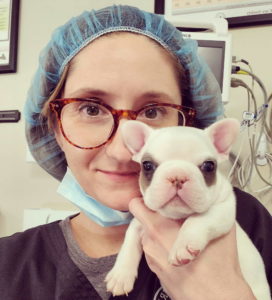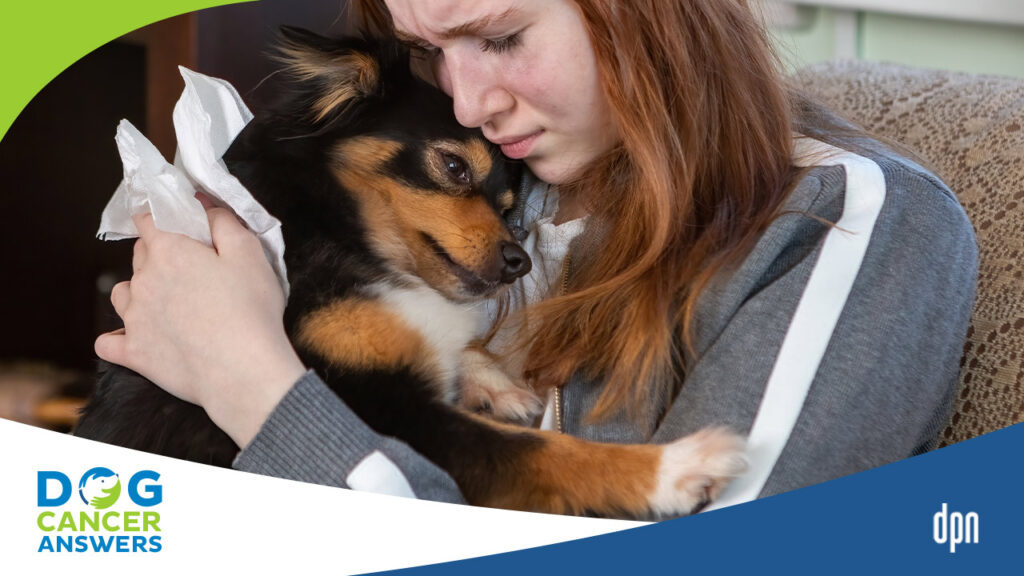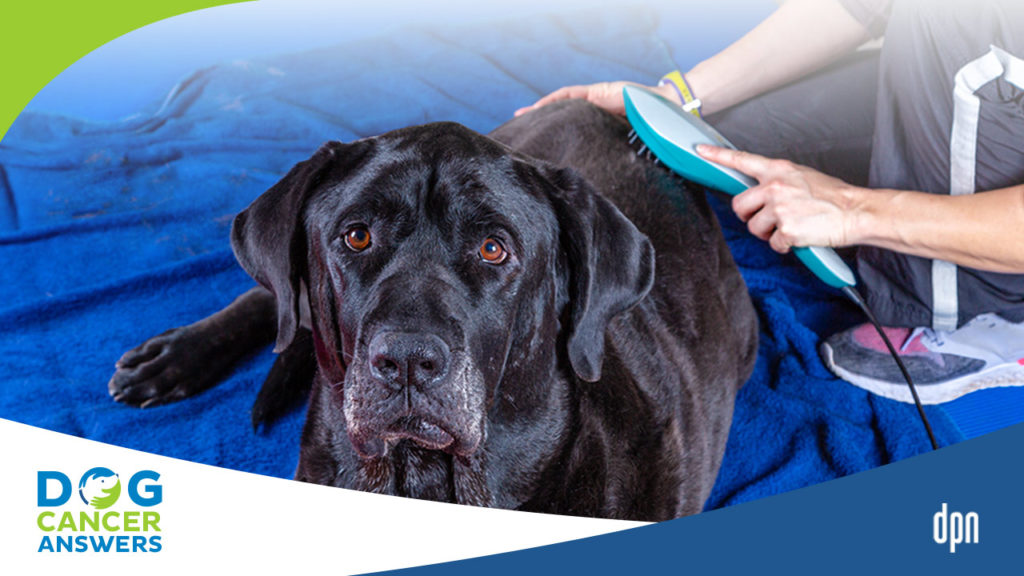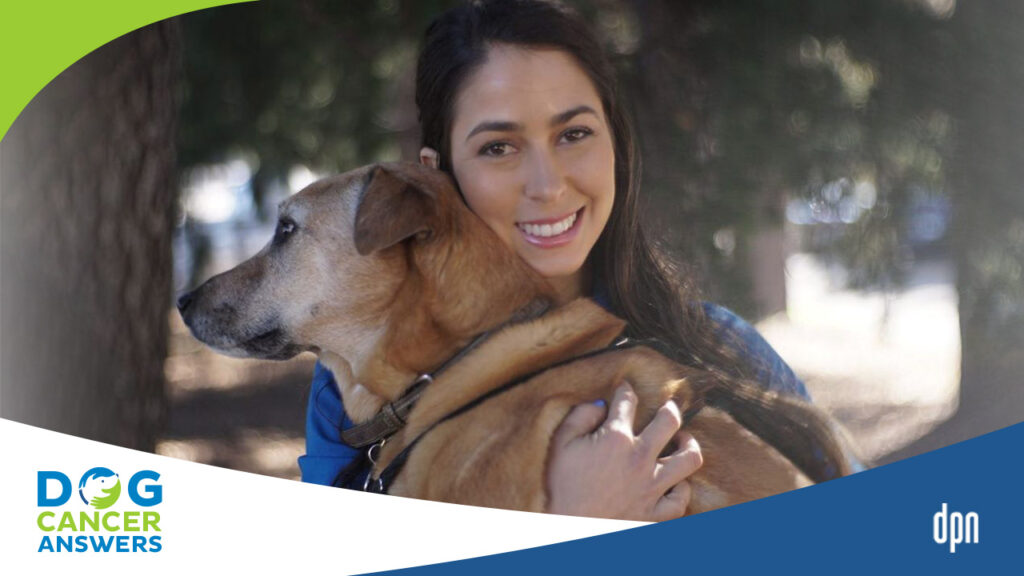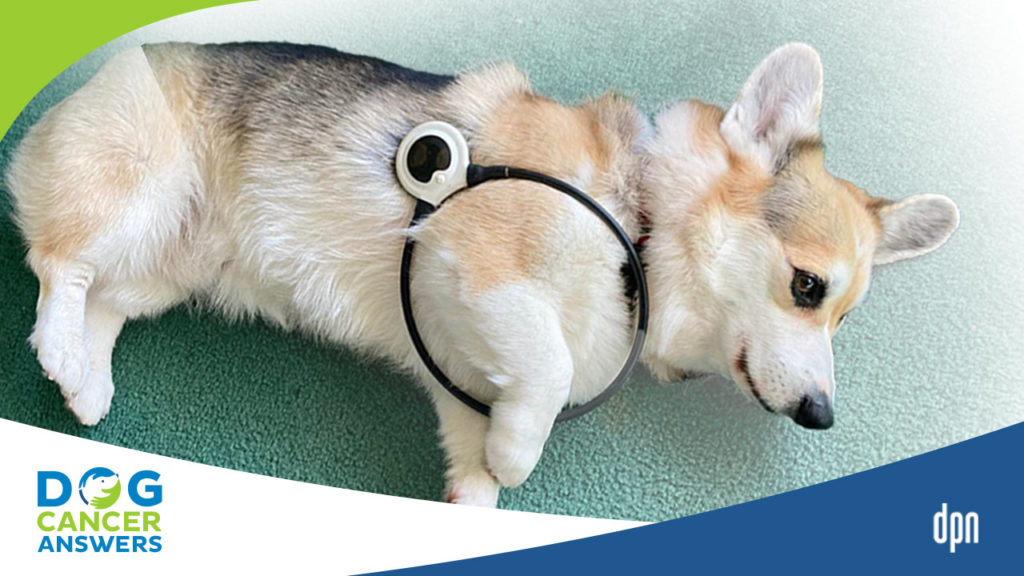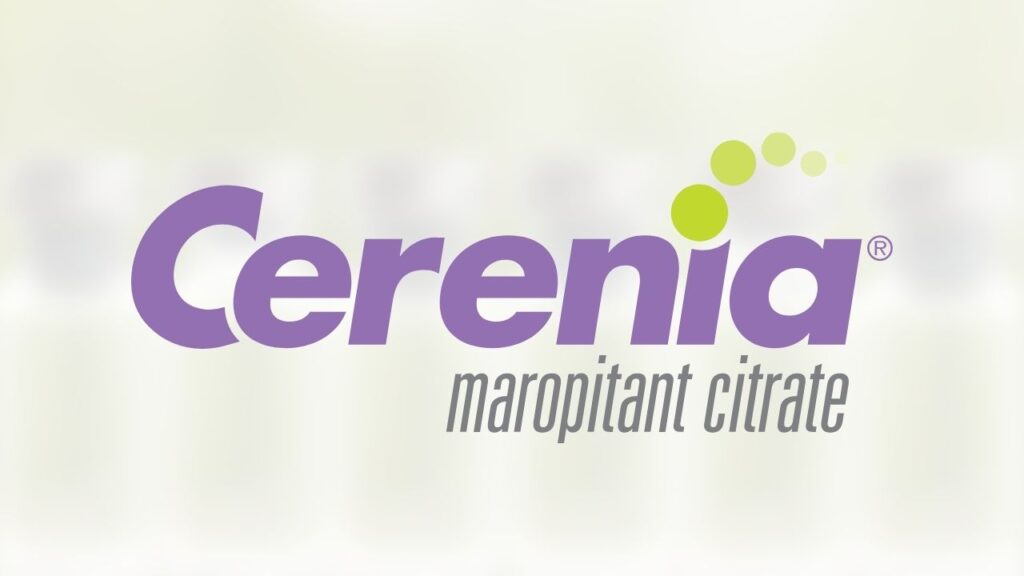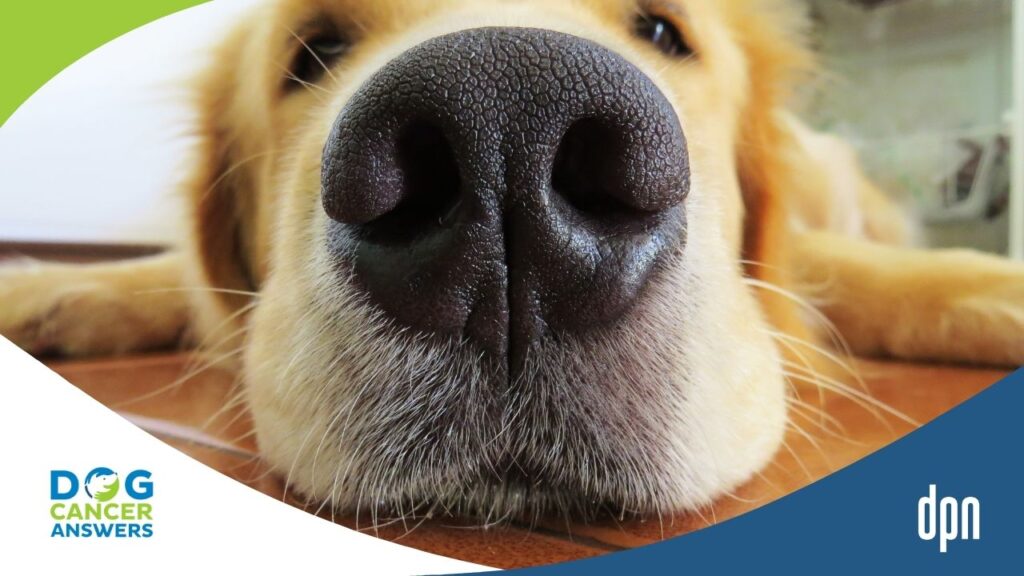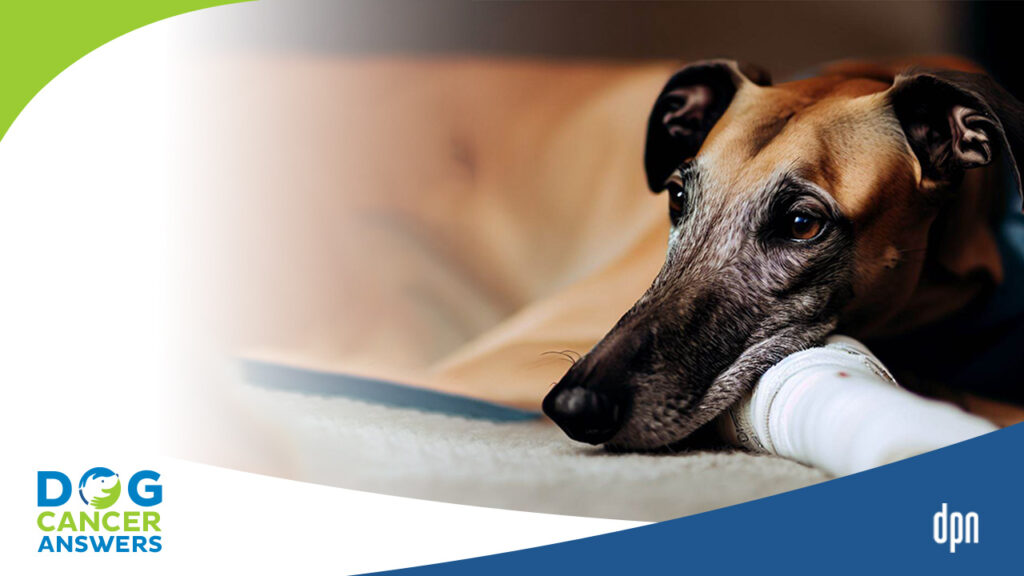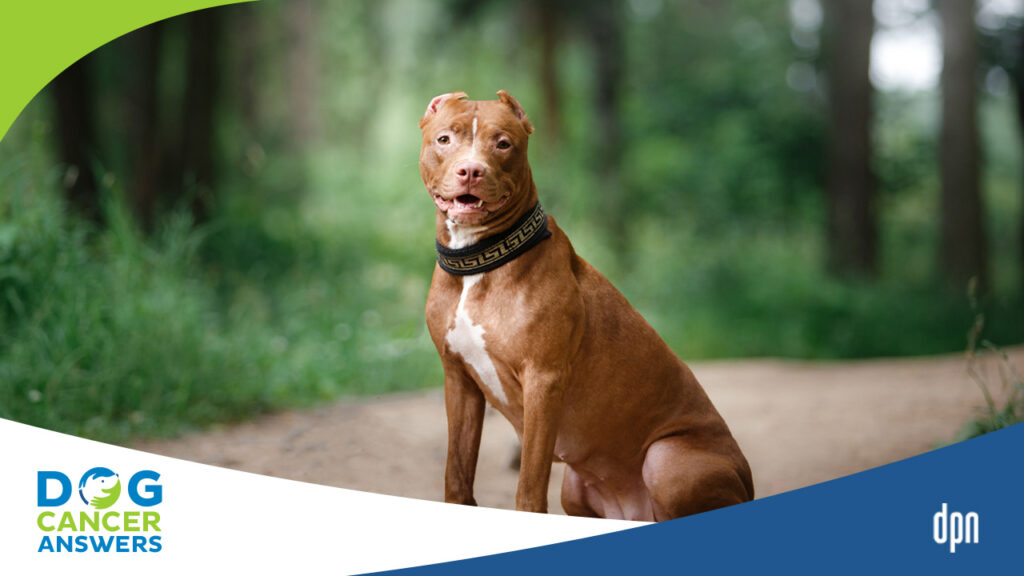EPISODE 206 | RELEASED March 6, 2023
Pain Control for Dogs After Surgery | Tasha McNerney CVT
Pain control for dogs after surgery is not just about drugs! There are so many other things your vet does to help your dog and that you can do at home.
SHOW NOTES
As a Certified Veterinary Pain Practitioner, Tasha McNerney knows her way around pain detection and control. And she says pain control and prevention is so much more than just the pills that your vet gives you when you pick your dog up after surgery.
Whether your dog is having a minor procedure to remove a small lump or a painful thoracotomy or amputation, pain control starts before the surgery. Some vets will send medications for you to give before coming in that help to calm your dog or provide pain relief. The drugs used to premedicate your dog before anesthesia often have pain-relieving properties as well.
After the surgery, your vet WILL want you to give those pain meds for a couple days, but she will also encourage you to feed a nutritious diet to support healing and may give instructions to ice or massage painful areas. For longer-lasting pain, therapies such as laser, acupuncture, home exercises, and other non-pharmacological techniques may be employed.
Tasha explains all of these things, as well as how to recognize signs of pain that indicate your dog needs extra support.
Links Mentioned in Today’s Show:
Passive Range of Motion (PROM) video: https://www.youtube.com/watch?v=iKECEsYJ0r0
International Veterinary Academy of Pain Management: https://ivapm.org/
[00:00:00] >> Tasha McNerney: And if there’s not adequate pain control on board postoperatively, those nerves are just gonna keep firing and keep firing. They’re gonna gonna fire for so long that eventually the spine and the brain is just gonna take every signal that comes in and treat it as pain.
[00:00:17] >> Announcer: Welcome to Dog Cancer Answers, where we help you help your dog with cancer.
[00:00:23] >> Molly Jacobson: Hello, friend. I’m Molly Jacobson, and today on Dog Cancer Answers we’re diving into a topic that definitely causes stress for many, if not all, dog lovers: pain after surgery. But the good news is there are lots of things that you, and of course, your dog’s veterinary care team, can do to keep your pup feeling her best no matter what procedure she needs.
To talk about pain control, we are joined by certified veterinary pain practitioner Tasha McNerney. Tasha McNerney, thanks for joining us today.
[00:00:57] >> Tasha McNerney: Thank you so much for having me.
[00:00:58] >> Molly Jacobson: So we wanna speak to you as a specialist, a vet tech specialist in pain management. Can you tell me a little bit about that training and what it entails and what you know?
[00:01:10] >> Tasha McNerney: Yeah. Oh man. What I know might be, we, we could go on off a big tangent there, um.
[00:01:16] >> Molly Jacobson: You know, a lot.
[00:01:16] >> Tasha McNerney: But specifically, training wise, um, I am trained as a certified veterinary technician and then, you know, working in the clinic all the time, I got put into surgery because I was fairly interested in, just in surgery in general. But then I became very interested in how do we manage the pain from surgery.
And as I kind of got more interested in acute pain management, chronic pain management, in all facets of pain management, I discovered there was this extra certification that you can get as a veterinary professional, and that’s called a, you could become a Certified Veterinary Pain Practitioner.
It’s a designation given out by the International Veterinary Academy of Pain Management. It’s about a two year program that you go through. Um, there’s a bunch of checklists, there’s an additional training that you go through, so you’re, you’re kind of studying everything from, again, very acute pain all the way to long-term chronic pain and then end of life care pain.
So really it runs, the training for this, and I just was fascinated by all the ways that we can help prevent pain in our patients, again, not only from a pharmacologic perspective, right, with drugs, but there are all kinds of physical modalities that we can do. There are kind of supplements and treatments that we can use.
So it’s not all about just like, you know, one, throwing opioids at our patients. It’s really about kind of nuanced, how can we prevent pain in the best way possible? And I think one of the newer things that I’m getting into, and it’s very fascinating, is this kind of idea that pain and pain perception is very tied to the psychological experience that the animal has.
And so I think that some of those things are very interesting as well, right? Making sure that we prevent fear, anxiety, and stress in our patients because those things are gonna exacerbate pain signals. So just pain in general is really a fascinating topic. And then how we treat it, whether it be acute or chronic, is very cool as well.
[00:03:11] >> Molly Jacobson: I wanna have you come back just to talk about how the emotional experience that a dog is in would exacerbate their pain, ’cause that is something Dr. Dressler has talked about for years, that like we should be boosting life quality and reducing stress and pain in our animals, especially dogs with cancer because that will actually help to relieve all of the symptoms of the cancer diagnosis that they’re going through.
[00:03:40] >> Tasha McNerney: Oh, 100%. Yes. 100%.
[00:03:43] >> Molly Jacobson: Yeah. Okay. Well, will you come back and talk about that?
[00:03:45] >> Tasha McNerney: Oh, certainly. Yeah.
[00:03:46] >> Molly Jacobson: Okay.
[00:03:47] >> Tasha McNerney: It’s really, really, it’s really, really cool. I mean, you know, certainly I think we all know that, you know, if we have something going on, things like meditation and yoga, right? They play such a big role. But how can you tell your nine year old Boxer to come do some yoga? Right? It’s not gonna happen. But there are other ways that we can, you know, benefit the emotional kinda psyche of our canine friends, and that’s just gonna help them.
[00:04:10] >> Molly Jacobson: I love it. I love it. Well, today I wanna talk about post-surgical pain management. Because so many people whose dogs have cancer either have just gotten back from an, an emergency surgery to remove a, you know, a, a bleeding tumor, or they’re planning for some sort of a surgery to remove a tumor or get a biopsy. So I would love to hear your tips and tricks about how to make sure that that, after the surgery’s over, what can they do at home?
For example, I know a lot of people don’t wanna give pain meds because they worry that giving too many medications is going to harm their dog, and it seems like their dog’s feeling fine, so they don’t think they need to give the pain meds. Is that something that you, could you weigh in on that as a pain specialist?
[00:04:58] >> Tasha McNerney: Yeah, so we do see that a lot. And so commonly when I do recheck phone calls for people and I ask them about the pain control, one of the more common things I hear is, oh, we stopped giving that because he seems like he was back to normal. And yes, I do think that you guys are gonna know your dogs best and if you really feel like he’s back to normal, then maybe we could talk about reducing the amount of days he’s on postoperative pain control.
But we don’t wanna just go no pain control cold turkey. And the reason for that is that when we have these pain signals that are going up into the brain, even if they’re small pain signals – and if anybody here has ever dealt with chronic pain, you know that over time, these chronic pain signals and these pain signals that just keep going into the spine and going in and going in and throwing into the brain.
Eventually they cause kind of these things that we call hyperalgesia, which means that you have a heightened sense of pain, and then this thing called allodynia. And allodynia can be kind of dangerous in that if there are too many pain signals that just keep going into the spine and into the brain, and they just can’t stop, the spine and the brain, they start to change. And with allodynia, what happens is that because of neuroplasticity, those kind of receptors, they just start treating any signal that comes in as a painful signal.
[00:06:20] >> Molly Jacobson: Oh.
[00:06:21] >> Tasha McNerney: Now we see this sometimes with animals that have chronic pain or pain that has not been treated post-operatively. One of the things that I can remember is when I was in my training for a CVPP, we have to write up these case reports. One of the case reports I wrote up was a cat that came in to us. And she was in for a pain consult, and it was because the owner had noticed that the cat’s demeanor had changed.
Now we know that, again, chronic pain or pain that just keeps coming in to flood the brain is gonna cause these changes in personality. You see it with people, we see it with animals. People who are in chronic pain, right, they’re just more reactive, they’re tense, they’re on edge. The same thing happens with our veterinary patients as well.
So this cat had come in, we did an evaluation, and the owner, one thing that they said during the exam that really stuck with me and was kind of a light bulb moment, is they said, "I wish we had never got her declawed." Ding, ding, ding! Now when we go back and we look at the record – again, whatever you feel about declawing.
[00:07:25] >> Molly Jacobson: Right.
[00:07:25] >> Tasha McNerney: We don’t need to talk about that.
[00:07:27] >> Molly Jacobson: Right.
[00:07:27] >> Tasha McNerney: Because I have some feelings about it.
[00:07:29] >> Molly Jacobson: First of all, it’s about dog cancer and secondly-
[00:07:32] >> Tasha McNerney: Yeah.
[00:07:32] >> Molly Jacobson: Yeah.
[00:07:32] >> Tasha McNerney: That’s not a thing.
[00:07:33] >> Molly Jacobson: It’s a can of worms, right.
[00:07:34] >> Tasha McNerney: Yeah.
[00:07:34] >> Molly Jacobson: Right.
[00:07:35] >> Tasha McNerney: But when we look at animals who may have had an amputation, which a declaw procedure is an amputation.
[00:07:41] >> Molly Jacobson: Right.
[00:07:41] >> Tasha McNerney: Whether it be a digit amputation, or a tail amputation, anytime there’s an amputation, that is a lot of nerves that are severed, right? And if there’s not adequate pain control on board postoperatively, those nerves are just gonna keep firing and keep firing. And they’re gonna fire for so long that eventually the spine and the brain is just gonna take every signal that comes in and treat it as pain.
[00:08:03] >> Molly Jacobson: Oh wow.
[00:08:04] >> Tasha McNerney: So by the time that animal got in to us, when we touched the animal, just touching the animal’s skin causes the animal to react and cower and hiss and be upset. That’s because, again, that spine is now thinking that this signal coming in is a painful signal. We see this a lot in Cocker Spaniels that have chronic ear infections, right?
That pain just keeps coming and keeps coming, and they’re not getting any relief. So then when you go to pet the dog on its belly, it reacts and it bites because it’s just interpreting all signals as painful signals. So we wanna make sure that postoperatively you are giving the drugs that are assigned to you by your veterinarian.
If you feel like your patient or your pet really is back to normal, you’re able to touch the incision and the animal doesn’t get upset with you, is back to walking around normally, and it’s been maybe at least over three days from the procedure, then you can have a conversation with your veterinarian about maybe tapering off the dose.
But if you’re talking about that first 72 hour window after surgery, it is very, very important that we have these pain control modalities and these drugs in place in the body because we don’t wanna set up kind of this chronic pain, or wind up pain that we call it, from even happening.
[00:09:20] >> Molly Jacobson: Wow. You know, I’m having light bulb moment after light bulb moment about dogs in my own life whose personalities changed, and I’m thinking, I think I know why Roo kinda changed a little bit. Like I can trace it back. That’s very, very helpful. So I know one of the reasons that people don’t like to give the pain meds is in part because they seem to sedate the dog a little bit. They’re worried about – the fact their dog has cancer, they’re already worried.
The dog has a surgery, that’s scary. The dog’s awake now, and I want him to be better. I want him to be walking. I want him to be eating. I want him to be, you know, playing again. And the pain meds seem to keep them down. So you’re saying, that’s right, they need that downtime for 72 hours at least.
[00:10:09] >> Tasha McNerney: That’s right. They do need that downtime.
[00:10:11] >> Molly Jacobson: And so even though I really want my dog to be up and bouncing, and if they seem to want to be up and bounce, I wanna get them up and bounce ’cause that’ll make me feel better, like they’re feeling better. It’s not worth the risk.
[00:10:21] >> Tasha McNerney: Correct. It’s not worth the risk.
[00:10:23] >> Molly Jacobson: Ugh.
[00:10:23] >> Tasha McNerney: And I think that this is one of those things that we have to look at, you know, yes, I want my dog to be up and back to normal and eating and jumping up onto my bed again.
[00:10:32] >> Molly Jacobson: Yeah.
[00:10:32] >> Tasha McNerney: But that’s what I want. That’s not what’s best for the dog. That’s what I want, right? So we have to look at kind of what is best for that dog for their healing journey and their recovery from surgery. Because a lot of these animals, especially again, if it’s a cancer patient that has had a big amputation or a big abdominal tumor removed. These are big surgeries. These are big, major surgeries. If you yourself had a limb amputation or an abdominal surgery – I’ve had an abdominal surgery, and I remember one day, maybe two days after leaving the hospital being like, oh, I feel great, I’m gonna take this laundry downstairs. Right? I felt great. Let me tell you, by that evening, oh my gosh, deep in my guts I could feel that that was not the right move and I should not have done all those stairs carrying a load of laundry. That was not the right move.
[00:11:18] >> Molly Jacobson: Right. And it could set you back in your healing.
[00:11:20] >> Tasha McNerney: 100%. Yes. So we wanna make sure, again, that not only are patients getting the pain control that they need, because we wanna make sure that everything stays right as far as our pain fibers go, right? Our A fibers, our C fibers going into the spinal cord and the brain. But also, especially if they’ve had an abdominal procedure or any kind of procedure that has cut through layers of skin and muscle, et cetera, it’s very important that they are a little bit sedate because they need to keep calm.
They need to keep quiet. We don’t want them popping any stitches open. Again, pain control is usually my foremost, I don’t want them feeling any pain, but I also don’t want them feeling so good that they’re running around the yard chasing after a ball, and then they have to come in and see me because guess what, they popped a bunch of stitches open, now we’re setting back our healing, all of that.
[00:12:10] >> Molly Jacobson: Right. And so sometimes I know doctors will or veterinarians will prescribe pain medications preemptively before a surgery happens. Is that part of this, making sure that those – that’s so fascinating, that nerves fire, fire, fire, and the brain starts to think, okay, everything hurts.
[00:12:28] >> Tasha McNerney: Yes.
[00:12:29] >> Molly Jacobson: Basically. Yeah.
[00:12:30] >> Tasha McNerney: Yes.
[00:12:31] >> Molly Jacobson: So is that part of it, why you should give those pain meds before surgery as well?
[00:12:36] >> Tasha McNerney: Yeah. So it goes into this thing, um, we don’t need to get too in depth, but if anybody is interested, they can read up on something called gate control theory. Right? And that’s the way that these signals go into your brain. If we can get some pain control on board ahead of time, we’re just gonna increase the threshold that it’s gonna take for pain to really get severe enough that the body is noticing it. Right?
So ultimately, if I can give you a little bit of, say, an opioid before I did an incision, right? Or for instance, the doctor is going to give you a bunch of local anesthetic before he takes that tooth out, we wanna make sure that we are controlling those pain signals and kind of keeping that threshold for pain high before we get in and we cause, kind of, that incident during surgery.
[00:13:21] >> Molly Jacobson: Because surgery hurts. Like bottom line, like.
[00:13:24] >> Tasha McNerney: Yes.
[00:13:25] >> Molly Jacobson: Right. Like no matter what kind of surgery it is, it’s hurting you.
[00:13:28] >> Tasha McNerney: No matter what kind of surgery it is, no matter what kind of animal you have, again, we have the same, almost the same physiology as dogs. So if we had an abdominal procedure cutting through skin, muscle, et cetera, we know that that hurts us. If we do the same thing to our canine friends, we know that they’re gonna have a similar level of pain and they need to have their pain treated similarly to us.
That’s why if you went into the hospital, you would get doses of opiods. When your canine comes into the hospital to see me, before surgery and after a surgery, he’s gonna get doses of opioids.
[00:14:00] >> Molly Jacobson: Okay. Because it’s the same. Can we assume that? Can we assume that in general, Hey, if this was happening to me, that would cause me pain, it’s happening to my dog, probably causing them pain?
[00:14:11] >> Tasha McNerney: Yes. We can assume that it’s causing it pain. And where are we kinda have people say, well, are you sure? It’s because most of these animals, right, even dogs, and especially really small dogs, they’re still, uh, prey species. So if we think about the animal kingdom, and certainly if we go way, way back and look at wolves, yes, they don’t have a lot of natural predators, but they still out in the wild have this instinct that is going to be best for them to hide any kind of pain that they have.
That’s why a dog could have, you know, you guys have probably seen it, you might have an animal that doesn’t express that they have a lot of pain, but maybe has a huge abdominal tumor growing. It’s not in that animal’s best interest to show signs of pain because that is a weakness. Then you’re, you know, kind of culled from the herd, et cetera. So they have this innate kind of drive to not overly show us pain.
That’s why when we see things like the animal limping or toe touching on a back leg and not willing to put weight on it, when we see that our Labrador goes from always eating breakfast to kind of like laying at the bottom of the stairs, doesn’t wanna move, not interested in food – if it’s gotten that bad, there’s something going on. We need to investigate it. We need to investigate what’s going on pain-wise with that animal. And you know, having a veterinary consult is the best thing at that point.
[00:15:32] >> Molly Jacobson: What other signs of pain should people be on the lookout for at home?
[00:15:36] >> Tasha McNerney: So there’s all kinds of different things, and certainly it does vary from canine to feline. But one of the biggest things is their eating habits. So usually if there’s a big change in eating habits, that usually will tip me off. Um, now again, I’m a veterinary professional, so if I have a dog that changed in eating habits, the first thing I’m doing right is like looking at their gum color, feeling their abdomen, do they react to me touching their abdomen. If they’re kind of tender in their abdomen, guess what? We’re going to get an ultrasound.
[00:16:05] >> Molly Jacobson: But that’s something I can do as a layperson. I can touch my dog’s belly and see if they react.
[00:16:10] >> Tasha McNerney: Certainly. Yeah. So if you notice your pet is not eating, especially if they are not eating and then you notice they have a pale gum color, you touch their abdomen and they wince, or they react, that one needs to see a veterinarian. We need to get that checked out, right? But things like if they normally sleep in bed with you and they usually jump up into the bed and all of a sudden, or overtime, you know what, they’re not sleeping in bed with you anymore ’cause they just don’t wanna jump up into the bed.
If they’re having kind of back pain or any orthopedic pain, they’re gonna be less likely to go up and down the stairs. They’re gonna be less likely to jump up in bed with you. Certainly if we have certain breeds that are, again, more predisposed to kind of orthopedic conditions than others, but if you notice that they just don’t wanna go on their walks, they’re not finding kind of joy in what they did before, they’re not chasing after that ball like they did before. Especially for dogs that used to be heavy chewers at one point, if they get away from the raw hide, they don’t wanna chew anymore, that could be a sign that they’re having some kind of oral or dental pain. So kind of like watching their clues. And you guys know best as their owners. You’re with them all the time. So if you call me up and you say, "Hey, he’s not eating. There’s something going on, there’s something wrong." We trust that and we wanna investigate that further.
[00:17:20] >> Molly Jacobson: Yeah. And it strikes me that like if I have a dental problem, I don’t wanna chew on that side of my mouth. Same would be true for my dog.
[00:17:27] >> Tasha McNerney: Yes.
[00:17:27] >> Molly Jacobson: If I have trouble, like if I sprained my ankle, I don’t wanna go for a walk. Same for my dog. Like, the cause might be different, but you know there’s something wrong. You can really tell from their behavior ’cause they’re, obviously they don’t speak English and they’re not really vocal because of that prey instinct you talked about earlier.
[00:17:45] >> Tasha McNerney: Yeah.
[00:17:45] >> Molly Jacobson: Okay. That’s very helpful. Are there any special considerations for pain management in cancer patients you wanna mention?
[00:17:55] >> Tasha McNerney: Yeah, certainly. So pain management is multifactoral, right? So we could have probably a whole hour long conversation on just opioids or just drugs. Um, but, if we’re talking about postoperative and cancer specifically, we are gonna talk about drugs, right, but then also we wanna talk about, at least, I usually will talk about things like nutrition, right? Nutrition is huge. The food that they eat, the type of food they eat, what they’re ingesting and how it reacts with their body, et cetera, is huge, especially when it comes to healing.
So if your patient, uh, your pet has just had a major surgery and they are only eating McDonald’s french fries, right, the nutritional content is not enough to give the body what it needs to make that tissue more likely to heal. We know that animals that have really good nutrition are going to heal faster from surgery. They’re gonna be up and around faster. The bonds of the tissue is gonna be stronger. So we know that we want good nutrition as well.
So that’s a big thing I have kind of conversations with clients. ‘Cause one of the flip side is when we use drugs like opioids and inhalant anesthetics, in that first 24 hours those animals usually don’t want to eat. Because we know that those drugs can cause nausea, vomiting.
[00:19:09] >> Molly Jacobson: Okay.
[00:19:10] >> Tasha McNerney: But we have some drugs on the market that can combat that nausea and vomiting. So if you’re at home post-surgery and your pet does not want to eat, call your veterinarian, right. Don’t let it go two or three days. Call your veterinarian and we can give you drugs that will help to kind of crush the nausea and vomiting feeling. So very similar to what humans get, if you ever went to the hospital because you were vomiting and they gave you something called Zofran, but we can give that to dogs as well.
We have drugs like Cerenia and Ondansetron, oral drugs that we can give you. So that doesn’t have to be always like IV administration. So if you can just get a little meatball with a drug into your pet, then we can give things that’re gonna kind of quelch that nausea and vomiting. And that’s what we want, ’cause one of the biggest things for tissue healing is I want that patient to get up and eating as soon as possible. Like that’s a big thing.
[00:20:06] >> Molly Jacobson: Oh, that makes sense.
[00:20:08] >> Tasha McNerney: And that can, again, that plays into what drugs I might choose for that patient and why a lot of, when we talk about drug selection and anesthesia nowadays, a lot of our protocols, we try to be opioid sparing. So we try to use the least amount of opioid as possible because we know, and if anybody here’s ever had surgery and had an opioid you know, it just makes you feel kind of queasy and nauseous. Like the last thing you wanna do is go eat like dinner.
[00:20:32] >> Molly Jacobson: Yeah. Opioids are horrible. They make me feel really awful. Yeah.
[00:20:36] >> Tasha McNerney: Yeah.
[00:20:36] >> Molly Jacobson: Okay, so it sounds to me like, just like people don’t always like giving the pain meds, sometimes they wanna skip those anti-nausea meds that were sent home with them ’cause they think their dog doesn’t actually feel nauseous, so they don’t need it. But you’re saying go ahead and give them.
[00:20:52] >> Tasha McNerney: Oh yes. I would say definitely give them. Again, unless your pet is back to eating normally. But if they’re not, we know that the drugs we have given will cause nausea and vomiting. That is one of the major side effects of opioids and anesthetic drugs. So we have to give something to combat that nausea and vomiting.
So please, please, please utilize the drugs that your veterinarian is giving you for nausea and vomiting, because we want the pet to be up and eating faster because that is going to increase the likelihood of healing. It’s going to speed up healing and tissue recovery, and that’s what we want.
[00:21:25] >> Molly Jacobson: How soon do dogs normally want to eat after, if all goes well?
[00:21:29] >> Tasha McNerney: So most of the time, I think this is breed dependent as well, if you have, I would say, you know, for the most part your Labradors, your Golden Retrievers, they’re just, they live for food, right?
[00:21:41] >> Molly Jacobson: They wake up hungry. They’re like, oh, the gas is off. Do you have anything to eat?
[00:21:45] >> Tasha McNerney: Yeah. So they live for dinner. I would say that they usually are the ones that will go home and despite being a little nauseous, will still eat their dinner. Most of the time I tell people if they don’t eat their dinner after you pick ’em up that evening, I wouldn’t worry too much about it. But by the next day after surgery, I want them back on a regular eating schedule. Now sometimes that means you might have to entice them with something a little more delicious than they normally get.
[00:22:12] >> Molly Jacobson: Okay, let’s take a short break here, maybe get a snack, and when we come back I wanna dive a little deeper into nutrition for dogs after surgery and other things we can do at home to provide pain relief.
And we’re back with Tasha McNerney. So nutrition is really important. And what is it that you think people should be feeding their dogs post-surgery?
[00:22:38] >> Tasha McNerney: Oh, well, I will start by saying that I’m, I’m not a boarded nutritionist.
[00:22:42] >> Molly Jacobson: Right.
[00:22:42] >> Tasha McNerney: So I am an anesthesia tech, just want everybody to know that. However, uh, I just, nutrition plays such a big role in the time of healing, and we know that animals who are up and eating faster are going to recover from surgery faster. And that’s why we encourage owners to maybe entice their animals to eat, make sure you’re giving them anti-nausea meds. I know that some owners will even do a home cooked diet for their pets as they’re recovering from surgery.
Again, as you’re recovering from surgery, you do need things that are a little more bland because these drugs are usually making our patients a little nauseous. We don’t want them to go out and feed like, you know, McDonald’s. Certainly the dog wants to eat that McDonald’s hamburger.
[00:23:25] >> Molly Jacobson: Sure.
[00:23:25] >> Tasha McNerney: But it’s not the best nutritional choice for the patient. So sometimes we’ll have our clients make food for the pets when they go home, and that usually consists of boiling ground beef or boiling something like ground turkey or chicken, and then adding in cooked white rice or brown rice to it. So just a simple chicken and rice diet is bland enough that it’s not going to cause any GI upset, which is again, we don’t wanna cause any GI upset by adding things that are loaded with fats and seasonings and salt and, as in like our human diet would be.
And I know some people will even add in some things into the diet, like blueberries are a really big one because they’re, they’re nice antioxidants, right? So if you have a dog that likes those as treats, like that’s a nice nutritional little snack to give your dogs. I know some people will do green beans in there for added fiber. Things like pumpkin can sometimes get added too.
There’s a whole host of things you know you can be feeding, but for postoperatively, again, to get that gut back to normal, to get the tissue back to where it needs to be healing, we just wanna make sure that we are giving our animals things that are a little more bland, but still have enough protein and carbohydrates to meet their caloric requirements.
[00:24:41] >> Molly Jacobson: Right, ’cause tissue healing requires a lot of energy and protein.
[00:24:46] >> Tasha McNerney: This is correct.
[00:24:47] >> Molly Jacobson: Those carbohydrates, like people who are on on a dog cancer diet often are very worried about carbohydrates. This is not the thing to worry about when you’re trying to heal from surgery, ’cause the dog needs that energy, correct?
[00:24:59] >> Tasha McNerney: It needs that energy. Yep. So again, after we’re completely healed, we can get back onto our maybe higher protein, lower carbohydrate diet. But you know, that first kind of three to five days after surgery is really pivotal for tissue healing. And we wanna make sure that the animal is eating, we’re giving them their pain medication, and again, then we’re talking with our veterinarian about any possible at-home rehabilitation exercises we could be doing, or even rehabilitation exercises that you wanna take the dog in to have done as well to help promote healing.
[00:25:32] >> Molly Jacobson: Yeah, let’s talk about that. Let’s talk about other things that we can do, either other treatments that we can get from veterinarians or other practitioners, and then things we can do at home to help our dogs manage their pain after surgery.
[00:25:47] >> Tasha McNerney: Yeah. So it depends on what they’ve had done. I mean, certainly if the pet has had a major abdominal procedure, there’s not as many physical therapy modalities that we’re gonna do with that. But if they maybe have had maybe a orthopedic procedure or an amputation, or if they had any kind of spinal procedure, um, there are some different modalities that we can do.
Um, just at home you can, if your pet will allow it, uh, and you’ve given the proper pain medications, there are some massage techniques that I encourage clients to learn. Because certainly we know that massage is going to help get some of that healthy lymph tissue in there, get rid of some of the, it’s gonna like, you know, free radical scavenge, get rid of some of the bad things.
So massage is something that I think a lot of owners can learn. So even if you had a patient that had an amputation or something like that, post knee surgery, post elbow surgery, all of those things, I encourage massage. And things like passive range of motion. There is a really good video series online that we recommend.
I think it was a hospital out of Kansas, I think it was Olathe Animal Hospital, and I can send you guys the details on that. But they have a passive range of motion series that basically teaches people how to do passive range of motion on their animals at home. And these are things that just take like three minutes.
Um, it’s a nice bonding experience with your pet, again, contributing to the emotional health of your, your pet, and also good for us as, uh, caregivers, right? We, we feel good about doing something like massage or passive range of motion. And again, these are things that don’t involve drugs. So again, it’s not always about drugs when it comes to pain management. It really is about this multimodal different layered therapy to make sure that we’re providing the best experience for the patient postoperatively.
[00:27:36] >> Molly Jacobson: And this is something that you’ve been trained in. I mean, at the top of the show you, you talked about your training, but I just wanna make, to reinforce this, that the current best practices in pain management are not just about drugs. They’re about all of these other things that we don’t necessarily think of as pain management techniques, but massage, acupuncture, these things are being considered as real tools to fight pain.
[00:28:00] >> Tasha McNerney: Oh, 100%. Things like cryotherapy is a big one as well, where you know, just simply at home, you with your pet, if it’s postsurgical, on the incision you can do cryotherapy or ice pack therapy to help relieve inflammation, right? Doesn’t involve drugs, but it’s gonna make that patient feel better. Again, things like massage, things like – now you’d have to go in to your veterinarian, but we have low level laser therapy. Again, non-pharmacological, but it’s gonna help reduce inflammation in that area.
Now what I will say is usually if we’re doing laser therapy, we are not doing it over an area where a tumor has specifically been removed.
[00:28:37] >> Molly Jacobson: Okay. Right.
[00:28:38] >> Tasha McNerney: So you, you have to be very careful with that. So just, uh, kind of note for listeners, if your veterinarian recommends laser therapy, you wanna clarify with them that this is in a different area, or at least not directly over an area that has had a tumor removal, ’cause we don’t wanna – laser therapy kind of like helps promote kind of that tissue healing and growth. We definitely don’t wanna promote any kind of cancer cells that maybe lingering.
[00:29:01] >> Molly Jacobson: Right, right, right, right. So are there tools that I can use at home, or do you have any rules of thumbs for me when I’m like, if I’m giving my dog ice pack therapy, like how does that work?
[00:29:12] >> Tasha McNerney: Yeah. So ice pack therapy is a really nice, easy one, especially if they’ve had some kind of amputation or if they had, uh, you know, a tumor, maybe like a mast cell tumor removed from their side, and they have an incision area that has some inflammation. Um, certainly they’re gonna be on their nonsteroidal, maybe anti-inflammatories to help kind of reduce the tissue inflammation. But things like cryotherapy are gonna help reduce that tissue inflammation as well. And you can just go to any pharmacy near you and buy one of those gel packs that you put into the freezer.
[00:29:42] >> Molly Jacobson: Sure.
[00:29:43] >> Tasha McNerney: Buy one of those, the kind of rectangular square ones.
[00:29:46] >> Molly Jacobson: Yeah.
[00:29:46] >> Tasha McNerney: And you put ’em into the freezer and you just put a washcloth over it, right, we don’t wanna ever put a cold pack directly in contact with the skin of our patient. So we just wanna put a washcloth or something in between, and then you wanna put it onto the incision site. And we want at least 20 minutes of contact time. So it’s kind of a nice time where we can sit with our patient and – sorry, your pet, everybody’s my patient, but they’re your pets.
[00:30:11] >> Molly Jacobson: Right, right. I get it.
[00:30:12] >> Tasha McNerney: But we wanna sit with our pet, we can have that on their incision, and then also, you know, offering them a treat, right? Maybe that’s the time that you’re giving them some chunks of sweet potatoes or some blueberries or whatever their high value treat is. So you’re giving them the treat, you’re bonding with them while they get their cryotherapy. Again, it’s emotionally really good for you and the pet. It’s good for their inflammation. We’re not layering in more drugs. It’s a win for everybody.
[00:30:39] >> Molly Jacobson: Yeah. And what else can we do at home that can really help our dogs?
[00:30:44] >> Tasha McNerney: Yeah, so there’s other things that we can do as well. I think a lot of it is, it depends on how comfortable you as a pet owner feel. Again, you can do some massage techniques and get trained in those techniques. There are different hydrotherapy techniques that we can do as well.
So again, if you work through this with your veterinarian, or even better if you’re working with a certified canine rehabilitation practitioner, they can give you some exercises that you can do, and certainly for some small breed dogs, we just have owners maybe fill up the bathtub to a certain height and then have the animals walk in water. And that helps get the joints going, um, it helps provide, again, some physical therapy and some resistance therapy to the pets.
Things that the owners can do at home, more bonding with them. And again, all these things that we can layer in, right, are gonna make our pets feel better and reduce the amount of overall drugs that we need to use. Right?
[00:31:39] >> Molly Jacobson: Right.
[00:31:40] >> Tasha McNerney: Just like in anesthesia, in pain management’s very much the same. If I can layer in different modalities, then I don’t have to use just one whopping dose of one drug. I can use a little bit of a drug together with a little bit of physical therapy, together with a little bit of cryotherapy, maybe massage, maybe even go as far as getting some acupuncture at the local veterinary clinic. All of these things together are gonna contribute to the healing of the pet.
[00:32:05] >> Molly Jacobson: How do you know when the post-surgery pain is pretty much gone?
[00:32:10] >> Tasha McNerney: So, if your clinician has kind of talked with you about different pain scoring and different ways that you can pain score, that’s a good way to go. I do encourage if anybody is interested in learning how their pets feel or perceive pain or some signs of pain, the International Veterinary Academy of Pain Management, uh, which is found at IVAPM.org, so that website has a whole section for pet parents on ways to evaluate pain, you know, signs and things to look for based on certain disease processes.
So if you feel like your pet is back to normal and they’re eating normally, again, you can touch that incision without them whimpering, or – you basically wanna be able to touch the incision without them having a big reaction.
[00:32:56] >> Molly Jacobson: Okay.
[00:32:57] >> Tasha McNerney: And if they’re back to normal and you feel like, Hey, I still have 10 days worth of this pain medication left, but I can palpate the incision, he’s back to eating normally, it’s already been 10 days. Talk with your clinician. Like we usually will send home more pain management than maybe is necessary because every patient is so different.
We might have some dogs that bounce back after five days, but we might have some, you know, especially if they’ve had a thoracotomy or something that is considered really painful, that really take like up to two weeks to really get back to normal.
[00:33:31] >> Molly Jacobson: Can you talk a little bit about what surgeries kind of hurt more than others or have more postoperative pain than others? You just mentioned thoracotomy. Explain that a little bit.
[00:33:42] >> Tasha McNerney: Yeah, so if we look at kinda level of pain anticipated, anything that – like let’s say we’re taking off a lipoma or a fatty tumor on the skin. Those lipomas usually don’t go down into the muscle and they certainly don’t go down further. Um, so when we take off tumors like that, we’re usually just cutting through skin.
And a skin incision or a simple skin incision is considered much less painful than if we were doing something like an abdominal tumor, where now we have to cut through skin and fat and muscle and abdominal fascia, right? All of these layers are gonna be innervated, right, and that’s just more nerve endings that we are kind of assaulting with the surgery. And the inflammation that we’re creating is even more.
So certainly a small skin thing is gonna be treated differently pain management wise than a deep abdominal procedure. Also, I think that people forget that if we have a patient that maybe has a tumor associated with its jaw and we need to take out a section of jaw and multiple teeth – think about yourself if you’ve ever had a tooth extracted or if you’ve ever had a root canal or something like that, these things hurt.
So that is kind of the level of pain that we’re dealing with when we do oral procedures as well. I mentioned thoracotomy because of the procedures that we currently do, if we have a tumor in the chest and we need to do a thoracotomy or a lung lobectomy or something like that, that is considered pretty painful. Because again, we’re going through skin, we’re usually going through, uh, muscle, we’re going into the chest cavity.
Sometimes we even have to take out ribs, we’re going through bones. So if your animal is having a thoracotomy, you really wanna talk with your clinician to make sure that preemptively and postoperatively we’re doing a very comprehensive pain management protocol. Now, sometimes even these animals will get something called a soaker catheter.
Um, so you might go home with a soaker catheter in place. A soaker catheter is a catheter that has fenestrations in it, and the surgeon will usually put it into the incision site. And what’ll happen is you’ll go home with injections and maybe every eight to 10 hours you will infuse that catheter with local anesthetic. So if anybody here has ever had surgery that – it happens in human medicine, um, ’cause my mom had shoulder surgery, she had one where you just infuse the catheter.
[00:35:59] >> Molly Jacobson: So it’s literally, it’s there all the time until they take it out.
[00:36:03] >> Tasha McNerney: It’s there all the time.
[00:36:04] >> Molly Jacobson: Oh, okay.
[00:36:04] >> Tasha McNerney: Yes. And we’re gonna infuse local anesthetic. Because again, usually these procedures, like big procedures involving the chest or going into the chest cavity, are very painful. And the reason that we really, really wanna make sure that we keep those patients as pain free as possible is because if they’re painful, and especially if they’re painful in their chest, right, animals in pain tend to take little, tiny breaths. Because it hurts to take a big breath, right? I don’t wanna take a big breath, that’s gonna hurt.
Well, the problem is if the patient for a long period of time is just taking these little tiny breaths, that means they’re not adequately ventilating, which means they’re not gonna get rid of the CO2 that they need to get rid of, and they’re not gonna take the oxygen in that they need to go all over the body and provide oxygen to all the important organs.
So for those guys, those thoracotomy patients, if we’ve entered the chest cavity, we need to make sure we’re providing them with many different layers of pain control so that they can oxygenate well, they can get back to normal, the tissue can get all the oxygen it needs, they can get rid of CO2, et cetera. So for those ones, you might notice that your pet comes home with a little bit of extra stuff associated when it comes to pain control for a thoracotomy.
[00:37:13] >> Molly Jacobson: Okay. I wanted to ask you before we wrap up, what’s your favorite pain medication or modality? What’s your absolute favorite method to address pain and why?
[00:37:27] >> Tasha McNerney: Oh man. Oh, that’s so hard. It’s like asking me to pick.
[00:37:31] >> Molly Jacobson: You have to choose among your children.
[00:37:32] >> Tasha McNerney: Yeah, I know. I was like, pick a favorite Beatles song. Uh.
[00:37:35] >> Molly Jacobson: Oh God.
[00:37:36] >> Tasha McNerney: Um, it’s so hard.
[00:37:38] >> Molly Jacobson: Right.
[00:37:38] >> Tasha McNerney: So.
[00:37:39] >> Molly Jacobson: I get it.
[00:37:39] >> Tasha McNerney: I think that a while ago, I probably would’ve said opioids. Originally when I got started in this because all of our research is done, we have so much information on opioids and how the body processes them, and it’s really fascinating. I would have said opioids. However, there’s a drug class called Alpha-2s, and you guys, if your dog has ever had reversible sedation or like, you know, twilight or something like that, they get this drug called dexmedetomidine.
And the reason that this is a really fascinating drug class is that not only is it used in veterinary medicine, but it’s also very much used in human medicine, specifically in pediatric ICUs. The drug in itself will provide not only analgesia, but also sedation and pretty nice sedation. The cool thing about dexmedetomidine in particular, as an analgesic and as a sedative, is that when it goes to the receptors, okay, it produces sedation, but it produces what’s called rousable sedation.
So that means if we have an animal or a child on a dexmedetomidine infusion or amount of dexmedetomidine, we can still go to them, they can look like they’re completely out, but if I go up to that kid and I give ’em a little shake and I say, "Hey, what pain level are you in? Do you need to go to the bathroom? Are you hungry?" They can still communicate.
And it’s the same with our canine patients, right? They can look like they’re completely out, but if I need to rouse them to get up to go to the bathroom or to walk over here, they’re still able to do that. So it’s providing analgesia and sedation, but still rousable analgesia and sedation, which I think is really fascinating.
And then again, the flip side is, it has a reversal agent. So the lovely scientist that came up with dexmedetomidine also realized that they could form this other drug that goes and sits at that receptor and basically antagonizes and completely reverses the effects of the dexmedetomidine. So it’s a fascinating drug. I think it’s just amazing, not only from a pain management aspect and a sedative aspect. I literally have it tattooed on my body because I think it is one of the most fascinating drug classes there is.
[00:39:39] >> Molly Jacobson: That’s really interesting. So, just so I’m clear, when they reverse the effects, they’re giving a, an antagonist, which is a, a drug that reverses it, that blocks it.
[00:39:48] >> Tasha McNerney: Yes.
[00:39:48] >> Molly Jacobson: So it’s a separate drug.
[00:39:50] >> Tasha McNerney: Correct.
[00:39:50] >> Molly Jacobson: But they’ve paired it with this so that you give the, I can’t pronounce it. What is it? Dex, um? What’s the drug?
[00:39:56] >> Tasha McNerney: Dexmedetomidine.
[00:39:57] >> Molly Jacobson: Dexmedetomidine. I didn’t say it right still.
[00:40:00] >> Tasha McNerney: We say Dexmed.
[00:40:01] >> Molly Jacobson: Dexmed, okay. That’s better.
[00:40:03] >> Tasha McNerney: Yeah.
[00:40:04] >> Molly Jacobson: So you give the Dexmed and you have this other on hand to immediately give as soon as you’re done with the Dexmed and you wanna take those effects away.
[00:40:12] >> Tasha McNerney: Yeah. If you wanna take those effects away, you have that option.
[00:40:15] >> Molly Jacobson: That’s awesome.
[00:40:16] >> Tasha McNerney: So it’s just such a nice drug class. Again, if the listeners really wanna geek out on, uh, analgesia and sedation, it’s a really cool drug class to, uh, read some of the articles and the research that’s happening on it.
[00:40:28] >> Molly Jacobson: Well, that’s fascinating. We’ll include links to all of the things you’ve mentioned in the show notes for sure.
So, Tasha, is there any last piece of advice that you wanna leave our listeners with when you consider post-operative pain management?
[00:40:43] >> Tasha McNerney: Yes. We want the listeners to know that it’s not all about drugs. Please talk to your clinicians about other ways and other modalities so we can keep our pets comfortable in the post-operative period. You know, if there’s a massage, like talk to your clinician, or maybe even there’s a rehab professional in your area that can give you some tips or some resources. Again, these are things that you don’t always just have to have, be giving more opioids or more drugs and more drugs.
There’s so many different things that go into pain control that are not drugs, and I think that we as pet owners have the opportunity to provide them to our pets and to speed up recovery and just provide an overall better experience for them and for us.
[00:41:27] >> Molly Jacobson: That’s wonderful. Thank you so much for joining us today. I really appreciate you coming and sharing all of this amazing information, but also your insights as a specialist in the field who’s helping so many dogs after surgery.
[00:41:42] >> Tasha McNerney: Yeah. Thanks so much for having me.
[00:41:46] >> Molly Jacobson: And thank you listener. We covered a lot of ground today, from why pain control after surgery is important in the first place to all of the different ways you can help your dog. I especially love that there are so many non-drug options. We’re always looking for those so we can use medications for pain relief when they’re most needed, and then provide additional support with therapies like acupuncture, massage, or even a simple ice pack.
Sometimes when you do more than one thing, they all add up to be more than the sum of their parts, and that’s certainly the case it seems with pain control.
To learn more about dog cancer surgeries and pain relief for dogs and all other things dog cancer, check out our website, dogcancer.com. You can also find the show notes there with the links that Tasha mentioned today. And don’t forget to join our Facebook group Dog Cancer Support. We have lots of dog lovers there who are happy to share the different signs their dog showed when they were in pain, and the methods that best helped their dogs.
I’m Molly Jacobson, and from all of us here at Dog Podcast Network, I’d like to wish you and your dog a very warm, Aloha.
[00:42:57] >> Announcer: Thank you for listening to Dog Cancer Answers. If you’d like to connect, please visit our website at dogcancer.com, or call our Listener Line at (808) 868-3200. And here’s a friendly reminder that you probably already know: this podcast is provided for informational and educational purposes only. It’s not meant to take the place of the advice you receive from your dog’s veterinarian.
Only veterinarians who examine your dog can give you veterinary advice or diagnose your dog’s medical condition. Your reliance on the information you hear on this podcast is solely at your own risk. If your dog has a specific health problem, contact your veterinarian. Also, please keep in mind that veterinary information can change rapidly, therefore, some information may be out of date.
Dog Cancer Answers is a presentation of Maui Media in association with Dog Podcast Network.
Hosted By
SUBSCRIBE ON YOUR FAVORITE PLATFORM
Topics
Editor's Picks
CATEGORY
